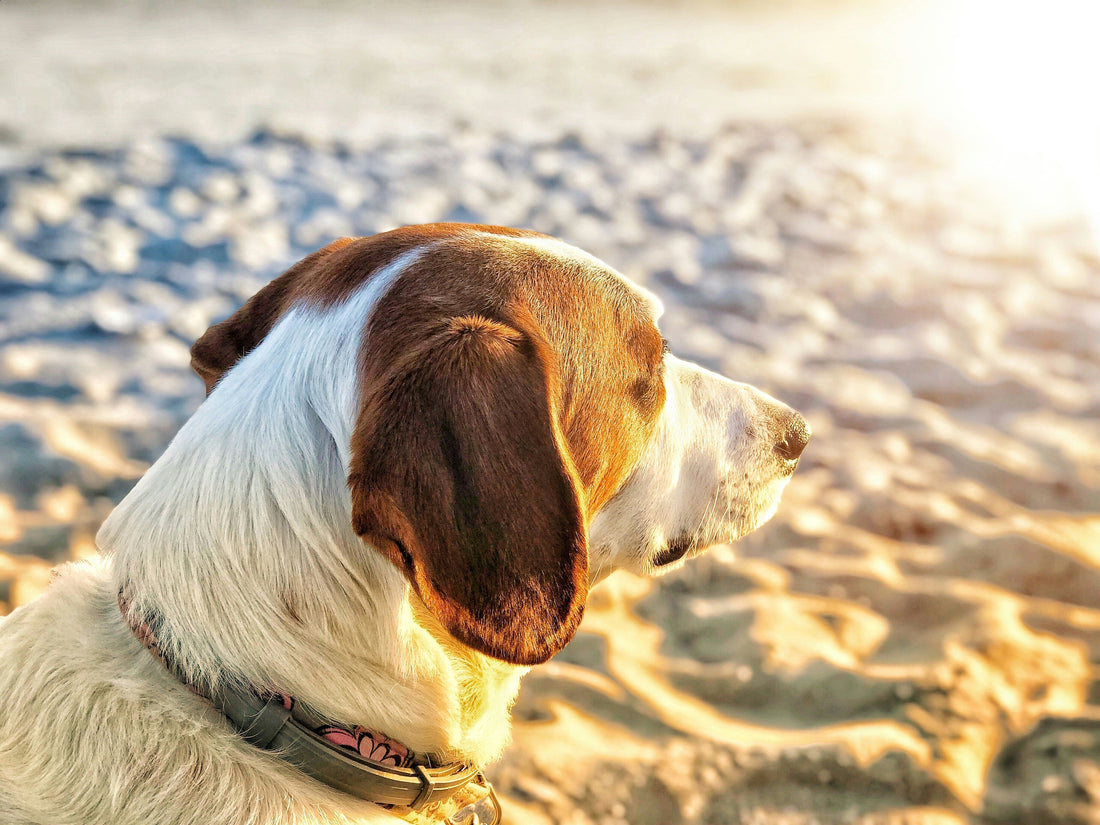
What is dog sunscreen?
Dogs, especially those with light-colored or thin fur, are just as susceptible to sunburn as us humans! Particularly on areas with less fur coverage, such as the nose, ears, belly, and around the eyes. Dog sunscreen is a specially formulated lotion that helps protect your dog's skin from harmful UV rays, just like human sunscreen, but there are some important differences.
Can I use human sunscreen on my dog?
You can, but you probably shouldn't. Unlike human sunscreen, dog sunscreen avoids harmful ingredients like zinc oxide (toxic if ingested) or PABA (para-aminobenzoic acid), which can cause adverse reactions in dogs. Dogs can easily ingest these toxic substances by licking them off their skin. Zinc poisoning in dogs is no joke—when ingested in large amounts, zinc can damage dog's red blood cells, leading to hemolytic anemia (destruction of red blood cells). Zinc can also harm the liver, kidneys, and pancreas.
Health concerns aside, dog sunscreens are also specially formulated to rub easily into dog hair without weighing it down.
What about baby sunscreen?
Baby sunscreens carry the same risks as human ones. Gentle on baby skin, but toxic to dogs! Best to steer clear.
How does dog sunscreen work?
Dog sunscreens, like human ones, contain ingredients that absorb or reflect UV rays. For example, titanium dioxide reflects UV rays, while octinoxate absorbs UV radiation to protect skin from sun damage.
UV radiation is categorized into UVA and UVB rays, which are different wavelengths and each affect the skin differently. UVA penetrates deep, causing DNA damage and cancer, while UVB leads to sunburn. Sunscreens labeled "full spectrum" usually contain filters to protect against both.
What breeds are at risk
Any dog can get sun burn or develop skin cancer, but dogs with shorter and lighter hair are the most at risk. Breeds like Boxers, Dalmatians, and Bulldogs, that have short hair, are good to keep an eye on!
How and where to apply dog sunscreen?
Spot test
Where can I use it?
Wherever your pup's fur is especially light or looks sparse is a prime spot. Some places to look out for are:
1. Nose and Muzzle
Dog snouts can catch some serious rays, especially when they're sniffing up at the sun!
2. Tips of the Ears and Around Ear Flaps
Fur on ear flaps or edges is especially thin and can burn easily.
3. Around the Eyes
4. Belly and Groin Area
When your doggo basks in the sun on its back, the belly and groin might get too much exposure. Watch out for sunburn on those sensitive spots!
5. Other Thin-Furred or Exposed Spots
What happens if a dog eats or licks sunscreen?
Dog-specific sunscreens are formulated to be safe in small amounts when ingested, but could upset your pup's tummy in large doses. Watch for unusual behavior and contact your vet if needed.
Tips to avoid dog licking sunscreen
- Distract your dog after applying sunscreen with play or by giving them something to chew on.
- Apply sunscreen to areas they can't easily lick, like nose, ears, and top of the head.
Applying dog sunscreens safely
- Apply 20 Minutes Before Sun Exposure—this gives the sunscreen time to bond with the skin. Distract your dog during this time (e.g., with a toy or treat) so they don’t lick it off.
- Reapply every hour or as needed
- If your dog goes swimming or gets wet, make sure to reapply once they dry off
Other Ways to Protect Your Dog from the Sun
- Get that doggo some shade! Umbrellas, sun shelters, or natural shade can reduce sun exposure.
- Limit peak sun hours: Avoid long walks or play sessions during midday when the sun is strongest.
- Dog Clothing: As with humans, UV-protective shirts or vests (especially for thin-haired breeds) can help shield vulnerable areas.
